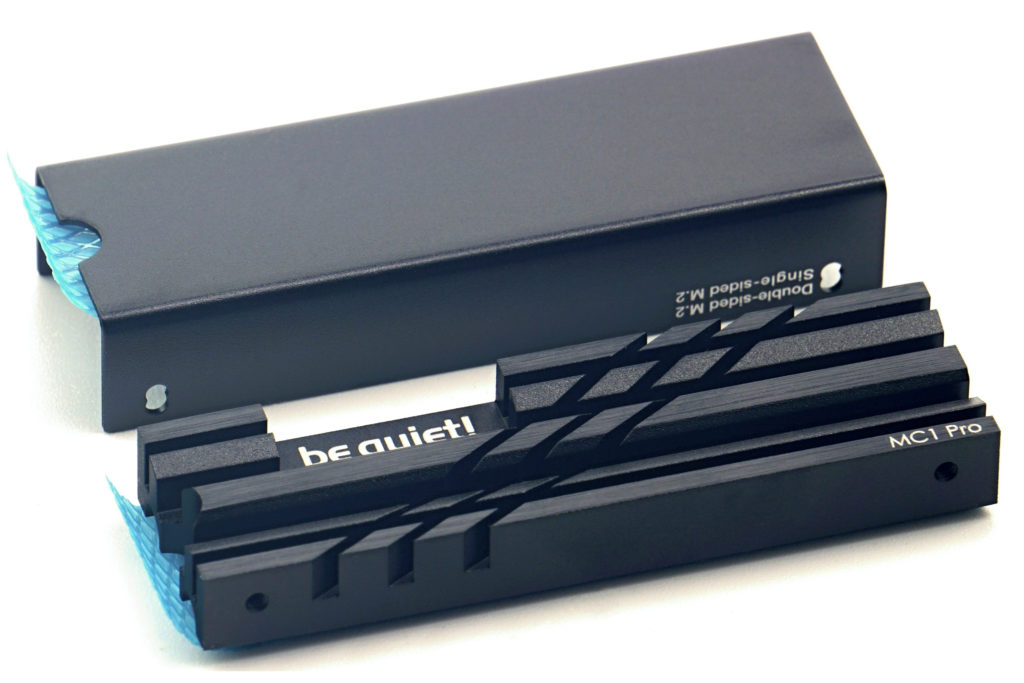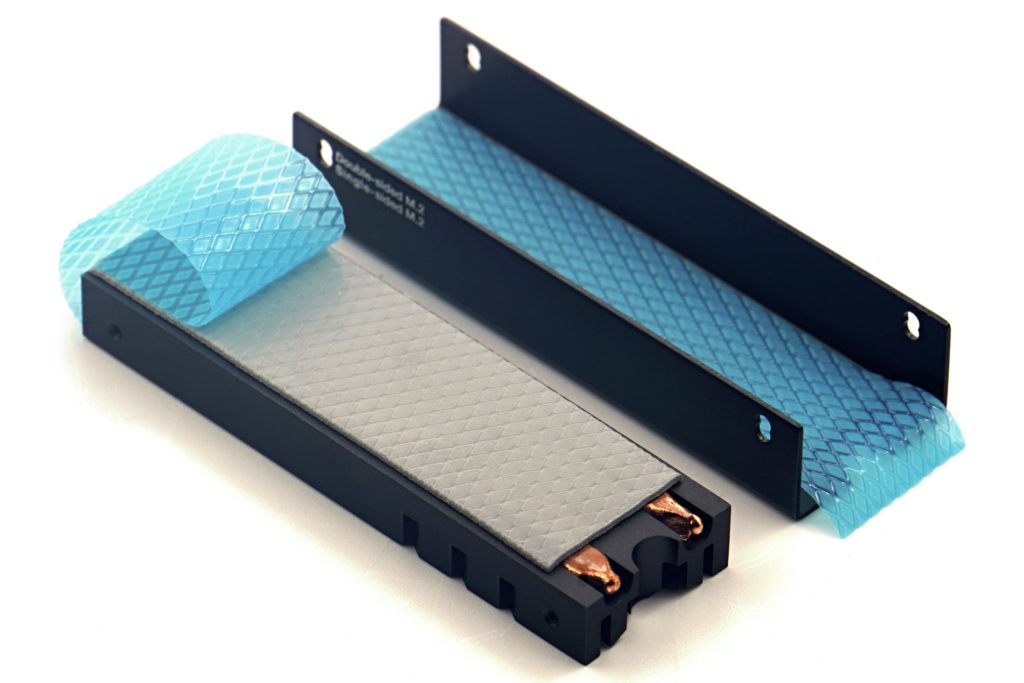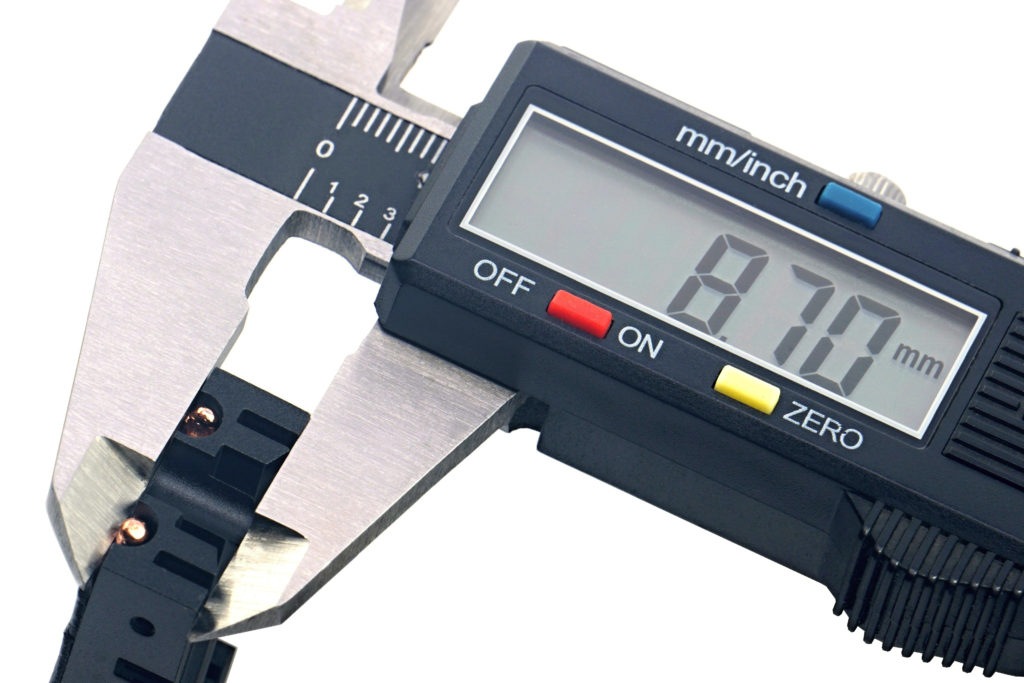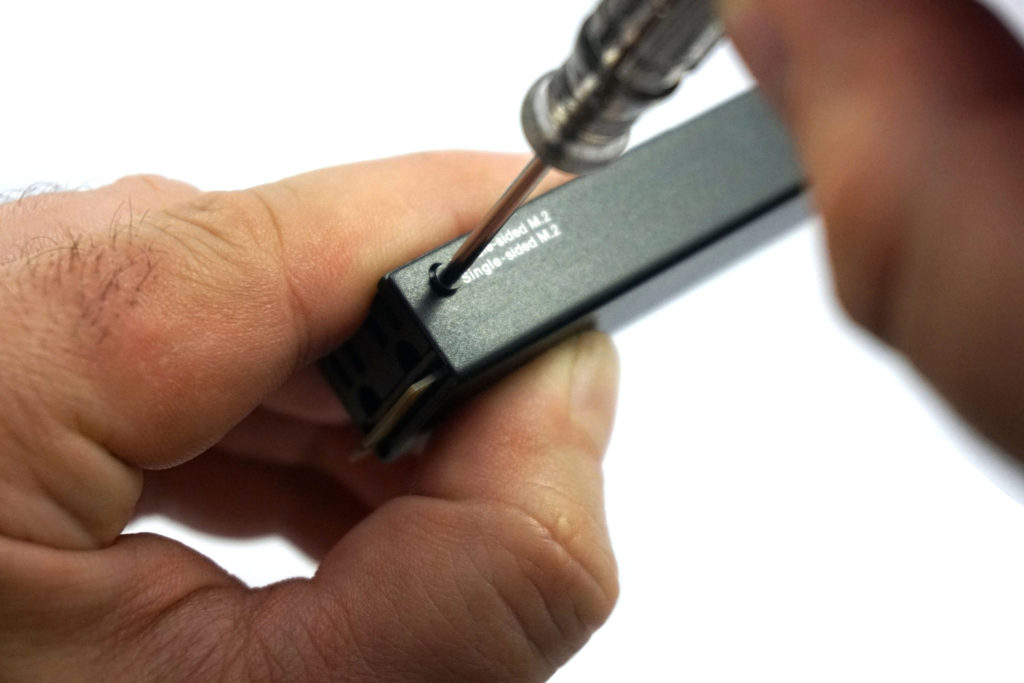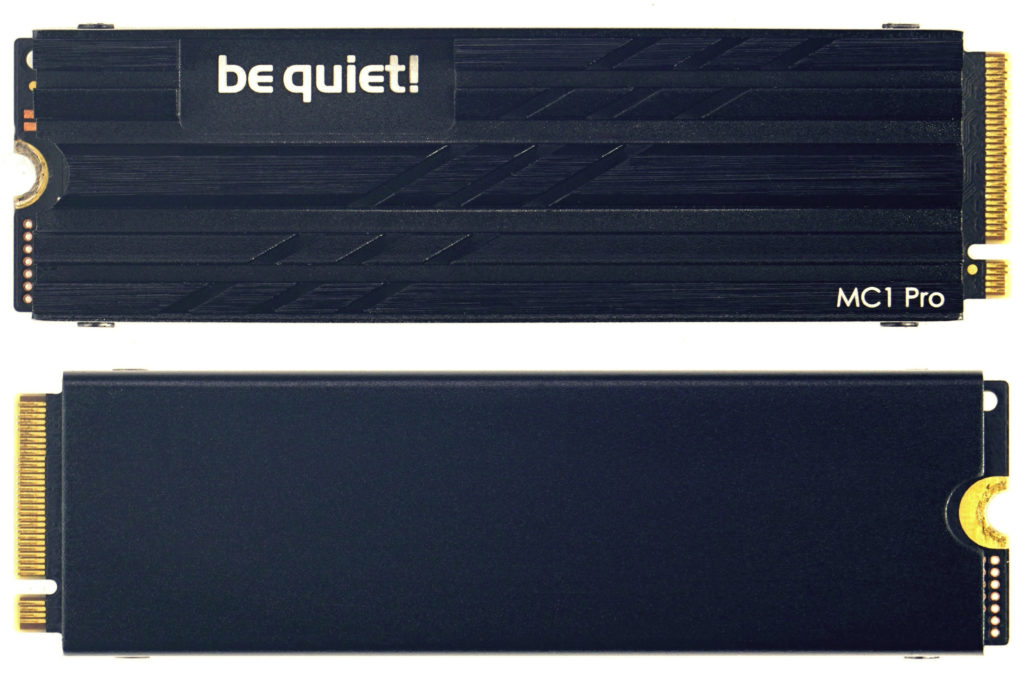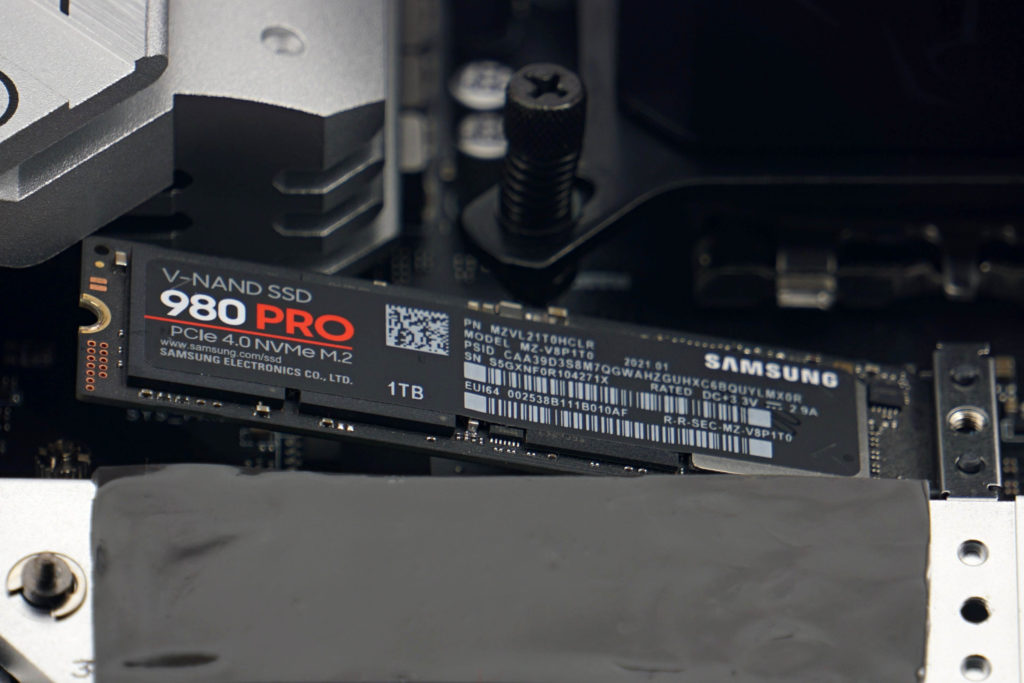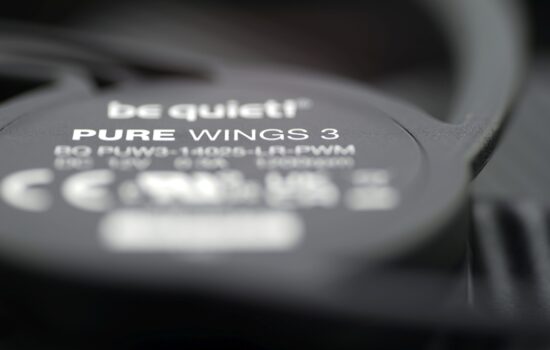BeQuiet! MC1 Pro cooler in detail
The “pro” variant of the BeQuiet! MC1 cooler for M.2 SSDs uses a heatpipe to dissipate heat faster and distribute it more evenly into the heatsink body, unlike the non-pro model. However, greater thermal peformance is achieved also because of the larger radiating area of its heatsink. The latter is still relatively low-profile, does not interfere with anything, and most importantly, so far outperforms all SSD coolers of similar size tested so far.
BeQuiet! MC1 Pro cooler in detail
The basic features are very similar to the simpler MC1 cooler – the planar shape of the MC1 Pro’s fins is identical. The cooler has (again) longitudinal finning with transverse notches in the middle. The individual fins are quite thick, the middle one is up to 5mm thick. Two and two on the sides are then half the thickness.
Not only are the fins wide, but also the spacing between them. Such a concept is suitable for passive heat sinks, whose cooling performance is, however, largely dependent on the activity of the system fans. As the spacing decreases, so does the gain from a larger surface area of possibly thinner fins, such as the Axagon CLR-M2. Its cooling performance in the environment of ordinary home computers catches up with the Axagon CLR-M2L10. With a lower weight and smaller surface area, but significantly larger spacing between the fins, it performs virtually the same in our tests.
The BeQuiet! MC1 Pro has a similar heatsink to the CLR-M2L10, but is more efficient. This is also because of the base, which contains a heatpipe. This is one of the two key differences as to why the MC1 Pro has a higher TDP than the MC1. Heatpipe dissipates heat significantly faster than pure aluminium monoliths (BeQuiet! MC1, Axagon CLR-M2(L10), Akasa Gecko Pro, …) and at the same time uses the heatsink more evenly.
We’ve written about two differences from the lower-end MC1, and this one is lower, literally. The MC1 Pro cooler is almost twice as tall (8.7 mm without the thermal pad.) But that’s mainly because the MC1 (with 4.9 mm) ranks among the lower-profile SSD coolers. The MC1 Pro cooler is also low enough to not clash with the expansion card above it. The weight of the heatsink (32g) is also twice as much as that of the MC1.
A backplate is also included, which is required to install the cooler on an SSD. This is also made of aluminum and it also takes part in the heat dissipation from the SSD, just from the other side. The backplate also has the advantage of eliminating the PCB bending that can be caused by the motherboard, or the different height of the M.2 slot connector and the standoff on the other side. In such a situation, SSDs can bend a bit, which worsens contact with the heatsink and thus, naturally, decreases the overall cooling performance. The backplate in SSD coolers compensates for these inaccuracies and keeps the PCB flush with the heatsink. Contact is thus fine.
The MC1 Pro cooler also accounts for the use of double-sided SSDs (i.e. typically high-capacity models that have memory chips on the bottom as well). Taking into account the varying thickness of the SSD itself, there are also different mounting holes through which the backplate screws to the finned heatsink. However, as with the MC1, we must have one criticism of the implementation. Namely, that the narrowing between the individual mounting positions (for single or double-sided SSDs) is so wide that the thread of the screws will pass through it.
In other words, the set position does not hold as well as it could and less downforce may be achieved with single-sided SSDs. This can be avoided, for example, by simultaneously pressing the heatsink harder (but of course sensibly) against the backplate while screwing, and once tightened, the appropriate position is held due to the higher pressure of the screw head on the rest of the structure.
With double-sided SSDs, you don’t have to be careful about the above (you don’t need to press anything when mounting), they take into account the maximum gap that can be created. Either way, these are details, and with as little heat transfer as SSDs have, from a certain point on, the intensity of the pressure doesn’t play an important role (as evidenced by the decent results of Axagon coolers held against SSDs by only “weak” rubber bands). The important thing is not to create an air gap somewhere, which will never happen.
For completeness, it should be added that the thicker, 1-millimeter thermal pad is also quite soft (and yet, it seems, with a higher density), so it compensates well for the small height differences that are typically between the controller and the memory. SSD support is strictly reserved to the 80mm M.2 format, as is the case with competing coolers. In short, the SSD has to follow the shape of the base in order to get all the way to the back, into the cutout area through which it attaches to the motherboard.
Methodology
The tests take place in a wind tunnel that replaces a standard computer case. Four Noctua NF-S12A PWM@550 rpm fans are used for system cooling in a balanced ratio of two intake to two exhaust fans. The intake air temperature is strictly controlled and is kept within a narrow range of 21–21.3 °C for maximum accuracy.
In line with findings from measurements of the impact of different positions on cooling efficiency, we test separate SSD coolers in the first slot, above the graphics card. From board tests we naturally have a lot of results of coolers (referred to as cooler 1 and cooler 2) from other positions as well, but there it is due to their fixed position.
For testing, we use the Samsung 980 Pro SSD (1TB). The load is run for 10 minutes (which is enough time in the wind tunnel for temperatures to stabilize) in CrystalDiskMark – sequential read and write cycles. The achieved power draw then is about 8 W, which is the upper limit of what M.2 SSDs achieve and shouldn’t change even models with PCIe 5.0 interface support.






